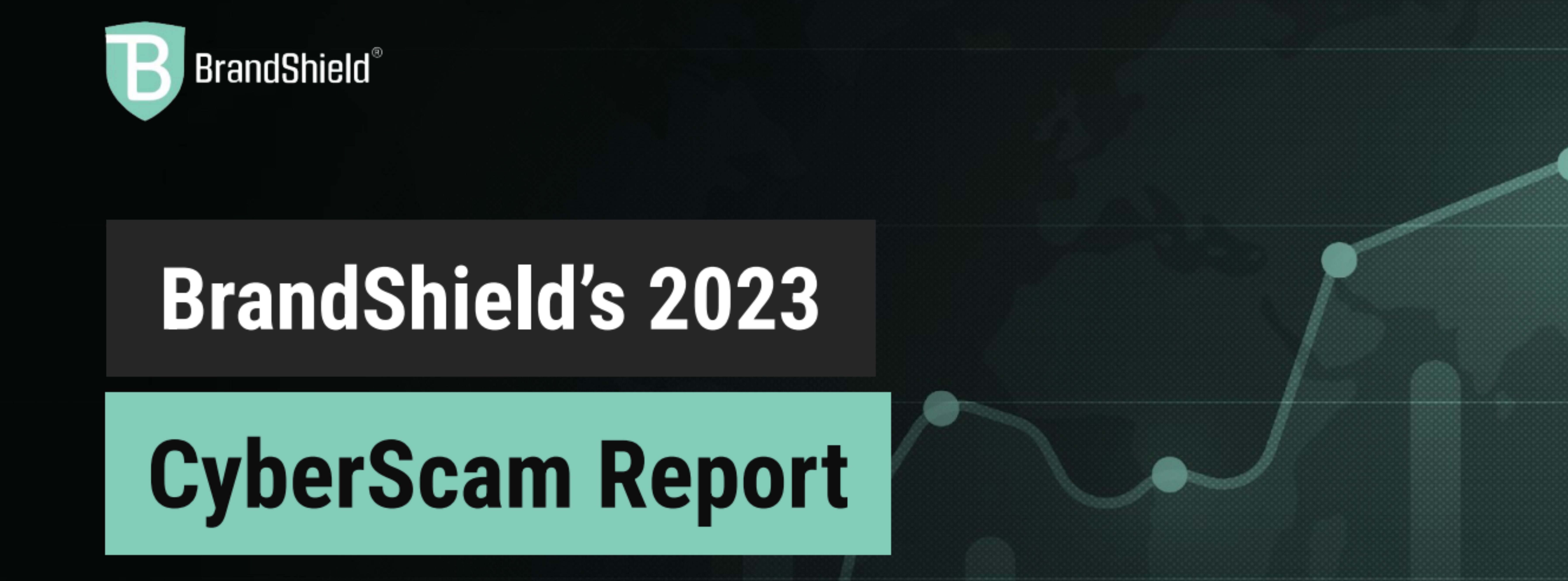BrandShield’s 2023 CyberScam Report: Navigating the Shifting Sands of Cybersecurity

BrandShield’s 2023 CyberScam Report: Decoding Digital Risks and Planning Ahead
In the ever-evolving realm of cybersecurity, the Chief Information Security Officer (CISO) is the vanguard against an array of digital risks. BrandShield’s 2023 CyberScam Report is a compelling exposé, delving into the intricate landscape where CISOs combat external digital risks such as online scams, phishing activities, and executive impersonation attempts.
The Dynamic Nature of External Threats
The report illuminates the dynamic challenges CISOs face in safeguarding their organizations against evolving threats. The seismic shift induced by the COVID-19 pandemic has not only increased the frequency of attacks but also introduced new tactics. The proliferation of online activities, coupled with the catalyzing role of AI, has redefined the digital risk landscape.
Key Insights
- External Threats: The Core Focus of 2024
External threats take center stage as CISOs gear up for 2024, with a resounding 92% planning to bolster budgets dedicated to countering these risks. This keen focus extends to diverse concerns, including the vulnerabilities presented by mobile apps, the intricacies of cryptocurrency, and the nuanced challenges of social media impersonation. The report underscores the urgency to fortify defenses against these multifaceted threats.
- Financial Ramifications of Online Scams
The financial toll of cyber threats emerges as the paramount Key Performance Indicator (KPI) for CISOs. The report reveals a stark reality — the average financial damage from online scams stands at an astounding $2.1 million per incident. A staggering 70% of surveyed companies witnessed damages surpassing the million-dollar mark. These figures underscore the imperative for robust cybersecurity measures to safeguard against crippling financial losses.
- Dissatisfaction with Current Solutions
Despite the pressing need for advanced protection, a mere 4% of CISOs express satisfaction with their current digital risk plans. A resounding 96% seek enhancements, emphasizing the shortcomings in both detection and remediation. Primary concerns include social media detection (40%) and website detection (38%), highlighting the urgent need for more effective and comprehensive brand protection strategies.
How CISOs Think And What Drives Them
As CISOs grapple with these challenges, the report takes a closer look at their motivations and obstacles. The majority prioritizes cost savings for the organization, with 58% considering the monetary value of damages as their top KPI. This pragmatic approach underscores the need for a holistic strategy that balances professional considerations with financial impact.
Mobile apps (20%), cryptocurrency (18%), and social media impersonation (17%) emerge as the most pressing external threats. These concerns intensify with the size of the organization, reflecting a nuanced risk landscape. The report’s insights prompt a reevaluation of digital risk solutions, especially those encompassing mobile applications.
Strategies for the Road Ahead: A Proactive Stance
In conclusion, the CyberScam Report paints a comprehensive picture of the challenges faced by CISOs in the realm of digital threats. The growing budgets earmarked for cybersecurity underscore the strategic importance placed on countering external threats. However, the dissatisfaction with existing solutions highlights the imperative for collaboration with vendor partners who possess both practical capabilities and a proven track record of expertise.
As the digital landscape evolves, the report serves as a beacon, guiding security leaders towards informed decisions that fortify their organizations against the rising tide of cyber threats. The integration of advanced technologies, including AI, becomes not just a choice but a necessity. It is a call for organizations to embrace a proactive stance, staying one step ahead of cyber adversaries.
Financial Stewardship Amidst Cyberstorms
As the report reveals, CISOs are primarily driven by their ability to save money for the organization. A staggering 58% identify the monetary value of damages caused by cybersecurity threats as their top KPI. This pragmatic orientation underscores the dual responsibility of CISOs — not only to protect against cyber threats but also to ensure the financial stability of the organization in the face of potential damages.
The Nuanced Threat Landscape
The nature of external threats is far from uniform. The report brings to light the nuanced concerns that occupy the minds of CISOs. Mobile apps, accounting for 20% of responses, emerge as a significant worry. Cryptocurrency (18%) and social media impersonation (17%) also feature prominently. The size of the organization further amplifies these concerns, with mobile apps becoming a more significant risk for enterprises with over 1000 employees.
The Financial Impact of Cyber Attacks
While the digital threat landscape is complex, CISOs distill success into monetary terms. The report reveals that the average financial damage from online scams is a substantial $2.1 million per incident. For a considerable 70% of companies, damages exceeded the million-dollar mark. This financial perspective places the role of the CISO not only in the realm of cybersecurity but as a guardian of the organization’s economic resilience.
A Call for Collaboration
In response to these challenges, the report underscores the critical need for collaboration. Vendor partners, equipped with practical capabilities and especially AI-based technology, and a proven track record of expertise, become essential allies for CISOs. The data suggests that beyond technology, experience, and knowledge play pivotal roles in addressing the deficiencies in current solutions.
Conclusion: Beyond Protection, Toward Resilience
In conclusion, BrandShield’s 2023 CyberScam Report transcends the boundaries of a typical cybersecurity analysis. It is not merely a glimpse into the threats faced by organizations but a strategic guide for CISOs navigating the complexities of the digital age. The call to action is clear — organizations must not only invest in advanced technologies but also forge partnerships with vendors possessing the requisite experience and knowledge.
The challenges are immense, but so is the opportunity for resilience. As organizations embrace a proactive stance guided by insights from reports like these, they fortify themselves against the ever-shifting sands of the digital threat landscape. The role of the CISO becomes not just that of a protector but a proactive leader steering the organization toward cybersecurity and financial resilience in an era of relentless cyber threats.
Click To Read to download the full report.